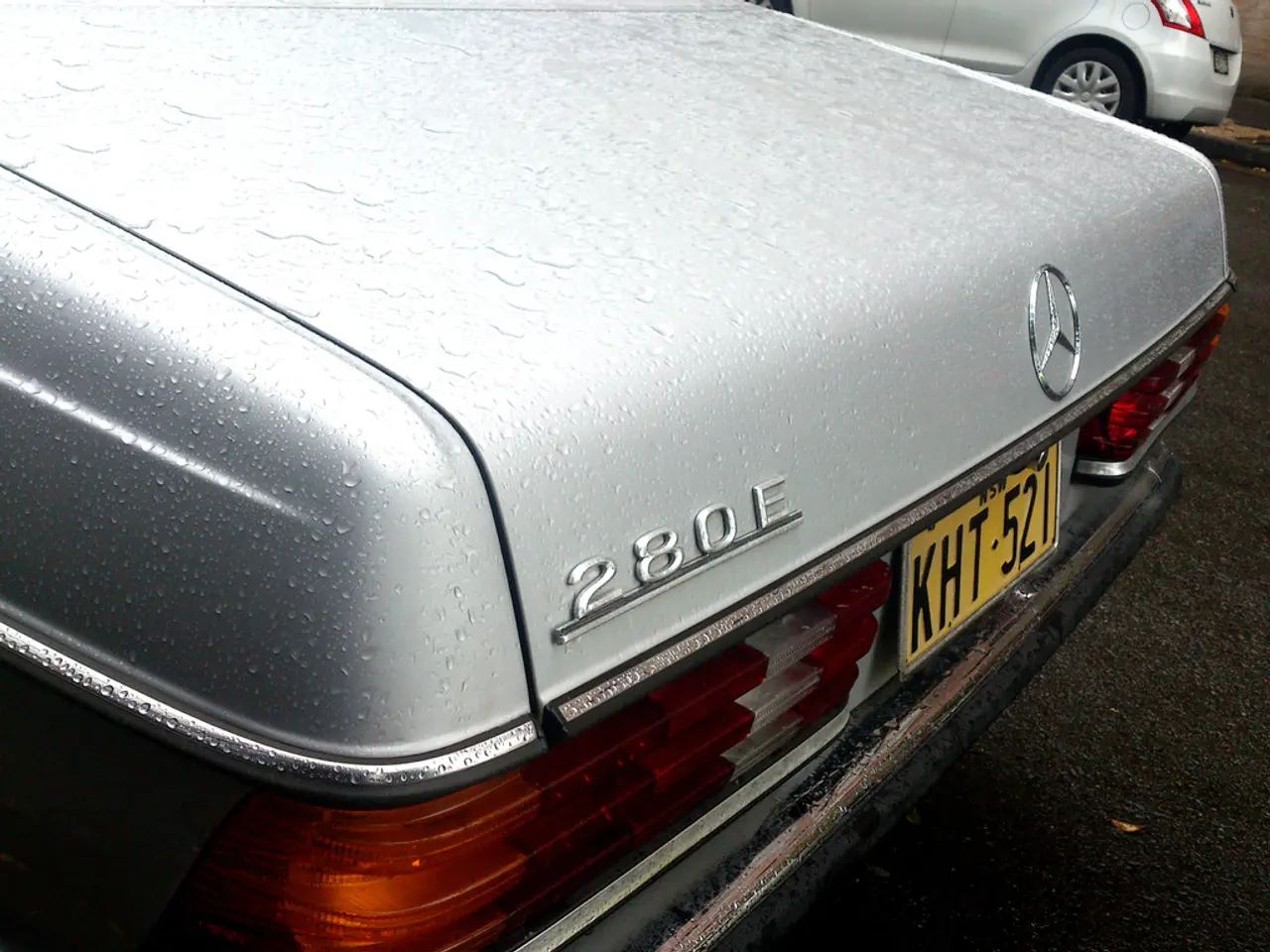Affordable Electric Vehicle from Hyundai, the Ioniq 2, set to compete with Renault 4
The automotive world is abuzz with anticipation as Hyundai prepares to launch its newest electric vehicle (EV), the Ioniq 2, slated for release in Q3 2026. This small electric hatchback shares its platform with Kia's twin model EV2 and promises to deliver a compelling combination of range, performance, and affordability.
Key Features and Specifications
The Ioniq 2 boasts an impressive array of features, starting with its battery options. With a 58.3 kWh battery, the vehicle promises a range of up to 267 miles (430 km). For those seeking even more mileage, an 81.4 kWh battery option offers a staggering range of up to 372 miles (599 km).
Under the hood, a single front-mounted electric motor produces 201 bhp and 209 lb-ft (283 Nm) of torque, making it one of the longest-range and most capable compact EVs in its class.
The Ioniq 2's design is coupe-inspired, with a pixel lighting signature that gives it a stylish and modern look. Inside, the driver-centric adaptive infotainment system, ambient lighting, and sound profiles linked to driving mode create a tech-forward interior. A wide digital display spanning half the dashboard integrates the instrument cluster and infotainment, while the minimalist, clean design is reminiscent of the Kia EV2's cabin aesthetics.
Pricing for the Ioniq 2 is targeted at around €30,000 (£25,000), making it one of the most affordable electric crossovers in the European market.
Comparison with Competitors
When it comes to competition, the Ioniq 2 will face off against the Renault 4 (Electric Revival), Volkswagen ID 2X, and Škoda Epiq in the small electric hatchback segment. Here's a comparison of key features:
| Feature | Hyundai Ioniq 2 | Renault 4 (Electric Revival) | Volkswagen ID 2X | Škoda Epiq | |-----------------------------|------------------------------|------------------------------|------------------------------|------------------------------| | Launch Timeline | Q3 2026 (Europe) | Expected 2025/2026 | Expected late 2024/early 2025| Expected mid-2025 | | Battery Capacity & Range | 58.3 kWh (267 mi) / 81.4 kWh (372 mi) | Estimated ~40-50 kWh; ~200-250 mi | Around 45-57 kWh; ~260 mi | Around 50 kWh; ~260 mi | | Power Output | 201 bhp (front motor) | Estimated sub-150 bhp | Approx. 175-200 bhp | Around 150-180 bhp | | Price Range | ~€30,000 (£25,000) | Expected €25,000-€30,000 | Expected €25,000-€35,000 | Approx. €30,000-€35,000 | | Design & Positioning | Coupe-inspired, minimalist, affordable crossover | Retro-inspired compact hatchback | Modern, sporty compact hatchback | Practical, well-equipped compact hatchback | | Platform | Hyundai E-GMP / modified E-GMP | CMF-B EV platform (Renault-Nissan) | Volkswagen MEB Small platform | Volkswagen MEB Small platform |
The Ioniq 2 excels in offering a longer maximum range with its larger battery option compared to most competitors. Its stylish and tech-forward interior, including a large digital dash and adaptive infotainment, might be more upscale than the more retro or practical-focused rivals. Pricing places the Ioniq 2 competitively within the mass-market affordable EV segment, directly targeting European urban and suburban customers who want range, affordability, and modern features.
The Volkswagen ID 2X and Škoda Epiq share the VW Group’s MEB Small platform, focusing on solid practicality and brand trust, likely with similar range but possibly less power than the Ioniq 2. The Renault 4 electric revival will differentiate mainly through its iconic retro design and likely smaller battery compared to the Ioniq 2, focusing more on urban short-distance mobility.
In conclusion, the Hyundai Ioniq 2 and Kia EV2 aim to be highly competitive with impressive range options, updated technology, and affordable pricing, positioning themselves strongly against the Renault 4 revival, VW ID 2X, and Škoda Epiq in the emerging small electric hatchback segment. This strategic move is significant as it marks Hyundai's entry into a completely new segment, reinforcing its position in Europe and bringing new buyers to the brand.
- The automotive industry is preparing for another electric vehicle (EV) launch, with Hyundai unveiling the Ioniq 2, an affordable electric crossover targeting the European market, scheduled for release in Q3 2026.
- In the small electric hatchback segment, the Ioniq 2 will face competition from the Renault 4 (Electric Revival), Volkswagen ID 2X, and Škoda Epiq. Each of these competitors varies in design, positioning, and performance, offering different strengths and appeal to customers.
- The technology-focused Ioniq 2 boasts a larger battery option that promises a longer range of up to 372 miles (599 km) compared to many competitors in its class, making it an attractive choice for drivers seeking extended mileage.
- As the small electric hatchback market becomes increasingly competitive, finance and transportation sectors can anticipate disruptive innovations in range, performance, and affordability, brought about by electric vehicles such as the Hyundai Ioniq 2, signaling the evolution of the automotive lifestyle and the advancement of the overall technology sector.




